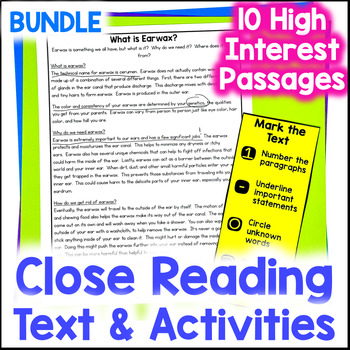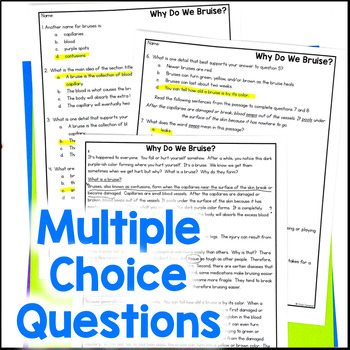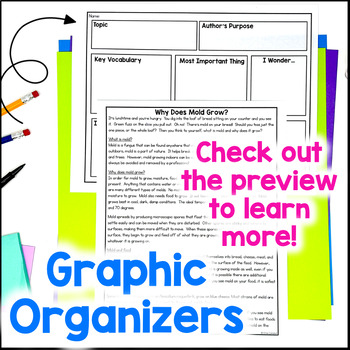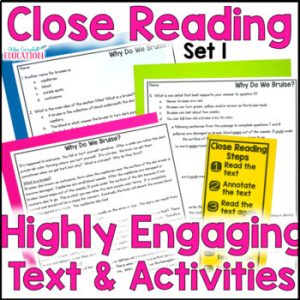Description
Hoping to increase student engagement during your reading block this year? These highly engaging non-fiction passages will be an absolute hit with your students! The 10 weird and interesting informational texts will keep students engaged while practicing close reading skills. Students will do a close read with each passage, answer 10 multiple choice questions, then use graphic organizers to show what they’ve learned.
*Save 25% by purchasing this bundle!*
These engaging reading comprehension passages, questions, and graphic organizers are the perfect way to connect literacy to science. These high-interest passages will absolutely increase student engagement, while also increasing student achievement!
10 Informational Text Topics:
-
What is earwax?
-
Why do we bruise?
-
A sprain or a broken bone?
-
Why do we poop?
-
What are boogers?
-
Why do we throw up?
-
What are scabs and blisters?
-
Why do our baby teeth fall out?
-
Why do we burp?
-
Why does mold grow?
Weird and Interesting Non-Fiction Texts and Activities BUNDLE Includes:
-
10 Non-Fiction Texts
-
10 Multiple Choice Questions for Every Text
-
Teacher Tips
-
Questions to Ask Students
-
Close Reading Steps on a Bookmark
Version with “Annotate the Text” and Version with “Mark the Text”
-
How to Mark the Text Bookmark
-
How to Annotate the Text Bookmark
-
Answer Keys
-
7 Graphic Organizers:
1. Main Ideas with Text Evidence
2. Ideas with Text Evidence
3. Central Ideas with Details
4. Main Idea with Details, Main Idea, Details, Conclusion
5. KWL
6. Overview: Topic, Author’s Purpose, Key Vocabulary, Most Important Thing,
I wonder, Important Facts, Illustration
7. Context Clues (3 versions: 3 words, 4 words, 5 words)
Spark a love of science with these high-interest reading passages. A great way to meet multiple standards with one activity.
Ideas for Use:
-
Whole Group Instruction
-
Partner Practice
-
Guided Reading Groups
-
Substitute Plans
-
Send Home to Practice
-
ELA Work Stations or Centers
-
Assessment
Close Reading: A reading strategy that is used to comprehend and analyze a text closely. Students will typically read the text at least twice for comprehension, details, analysis, and deep questioning of the text’s purpose and meaning.
Steps for Close Reading:
-
Read the Text
-
Mark Up the Text or Annotate the Text
-
Read the Text Again
-
Define Unknown Words
-
Read the Text Again
-
Respond to Reading
Copyright © Chloe Campbell
Permission to copy for single classroom use only.
Please purchase additional licenses if you intend to share this product.







Reviews
There are no reviews yet.